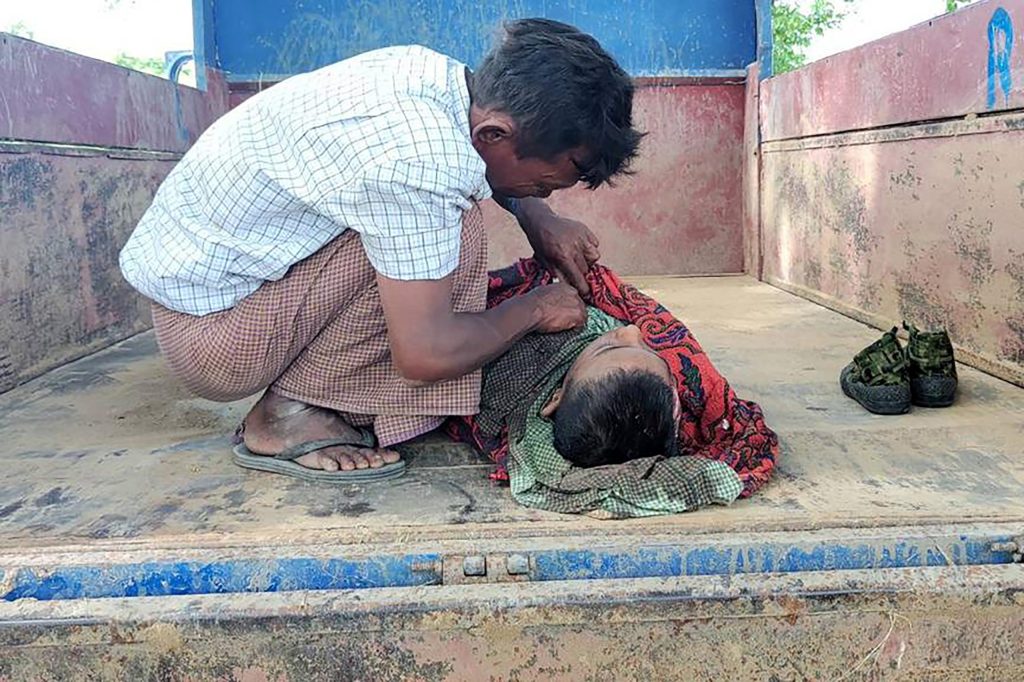Data Matters No. 32
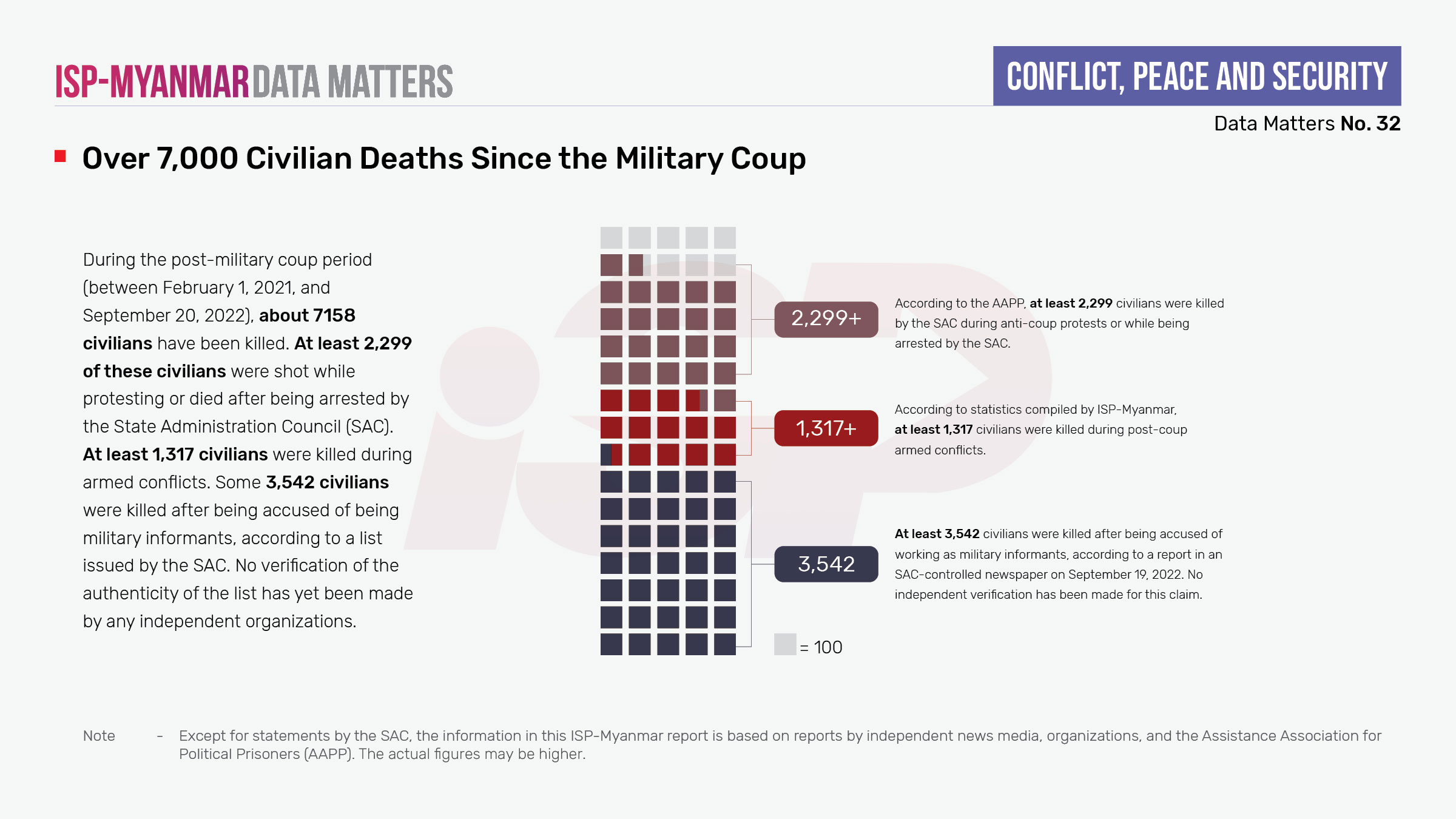
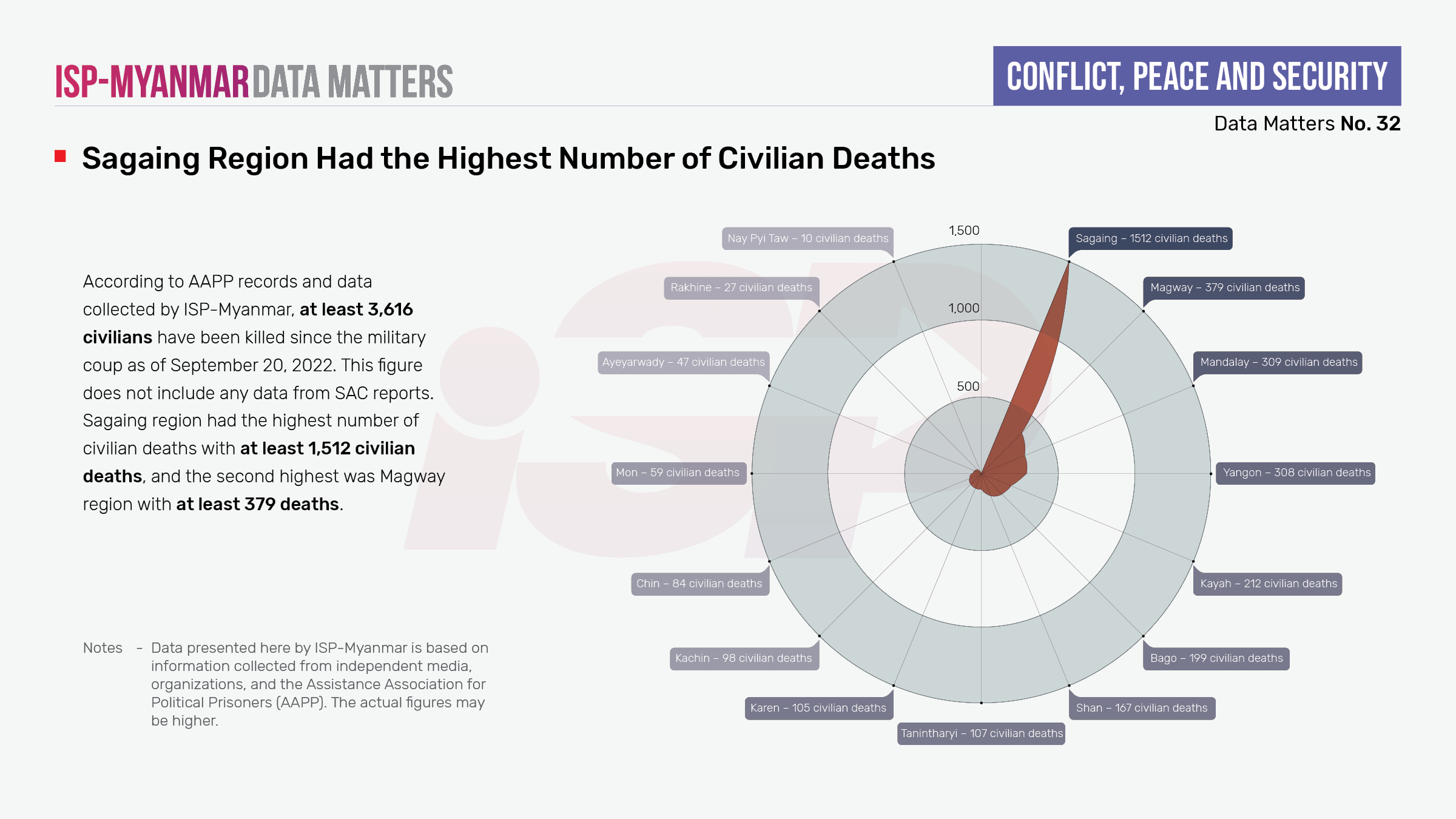
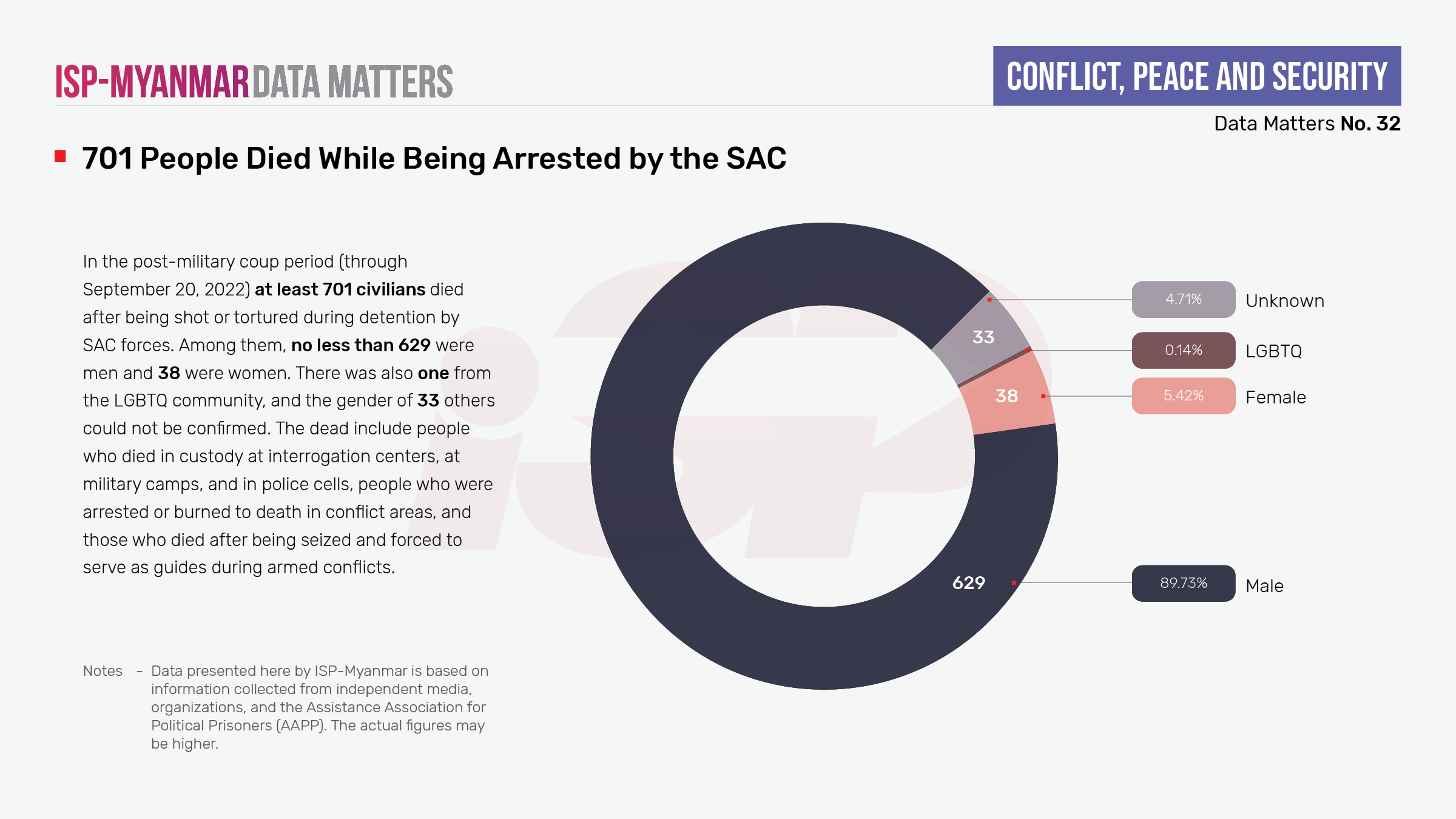
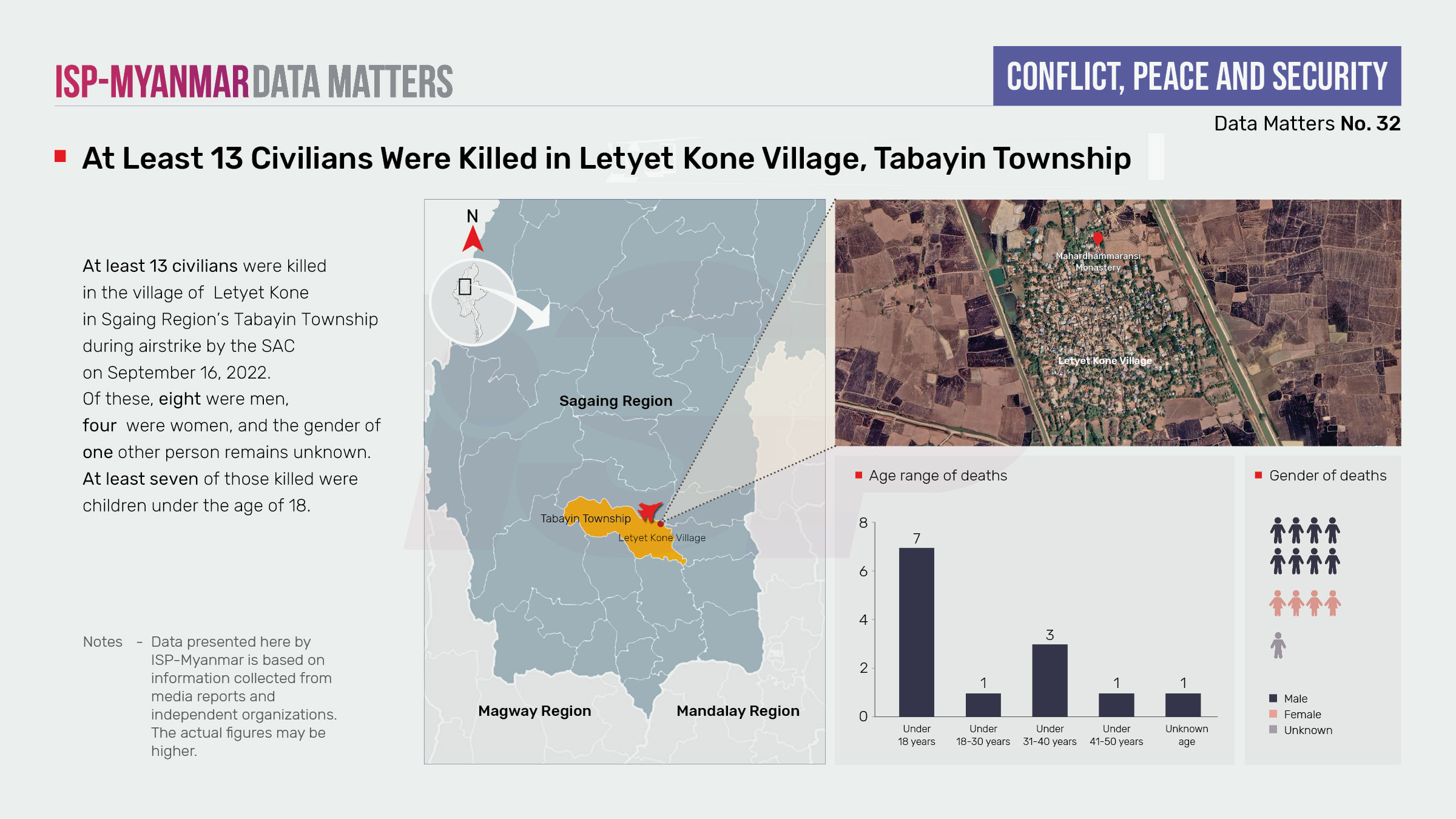
Conflicts that followed the military coup in Myanmar led to the deaths of at least 7,158 civilians through September 20. At least 2,299 of these civilians were shot while protesting or died after being arrested by the State Administration Council (SAC). Another 1,317 civilians were killed during armed conflicts. Some 3,542 others were killed after being accused of being military informants, according to a list released by the SAC. No verification of the authenticity of the list has yet been made by any independent organizations.
At least 1,512 civilians were killed in Sagaing Region, according to AAPP records and data collected by ISP-Myanmar – the highest number of deaths recorded anywhere in the country. Magway had the second-highest number with at least 379 killed. At least 701 others died after being shot or tortured during their detention by SAC forces. Among those killed in detention, at least 629 were men, 38 were women, and one identified as a member of the LGBTQ community. The gender of 33 others could not be confirmed.
Civilian deaths have continued to rise. At least 13 people were killed in the village of Letyet Kone in Sagaing Division’s Tabayin Township during airstrikes by the SAC on September 16, 2022. Of these, eight were men, four were women, and the gender of one other remains unknown. At least seven of those killed were children under the age of 18.
∎ Why does it matter?
By studying the post-coup situation, further research can be conducted to examine whether there has been a change in conditions related to Myanmar’s peace process. In addition, by looking at the number of civilian fatalities and injuries, how they were killed and wounded, and the number of people displaced by fighting, it is possible to examine whether or not armed forces have committed human rights violations from the perspective of transitional justice.
∎ Other relevant reading
On-the-ground reports from ethnic news organizations and other independent media groups provide regular updates about conflict situations, their impact, and the collateral damage in the aftermath of the military coup. These include reports of civilian fatalities, houses torched, and rising refugee and IDP issues on the ground. In addition, records and reports by United Nations organizations such as the United Nations Office for the Coordination of Humanitarian Affairs (UNOCHA), and other independent local and foreign organizations also provide information about the ongoing conflict situation in Myanmar.

